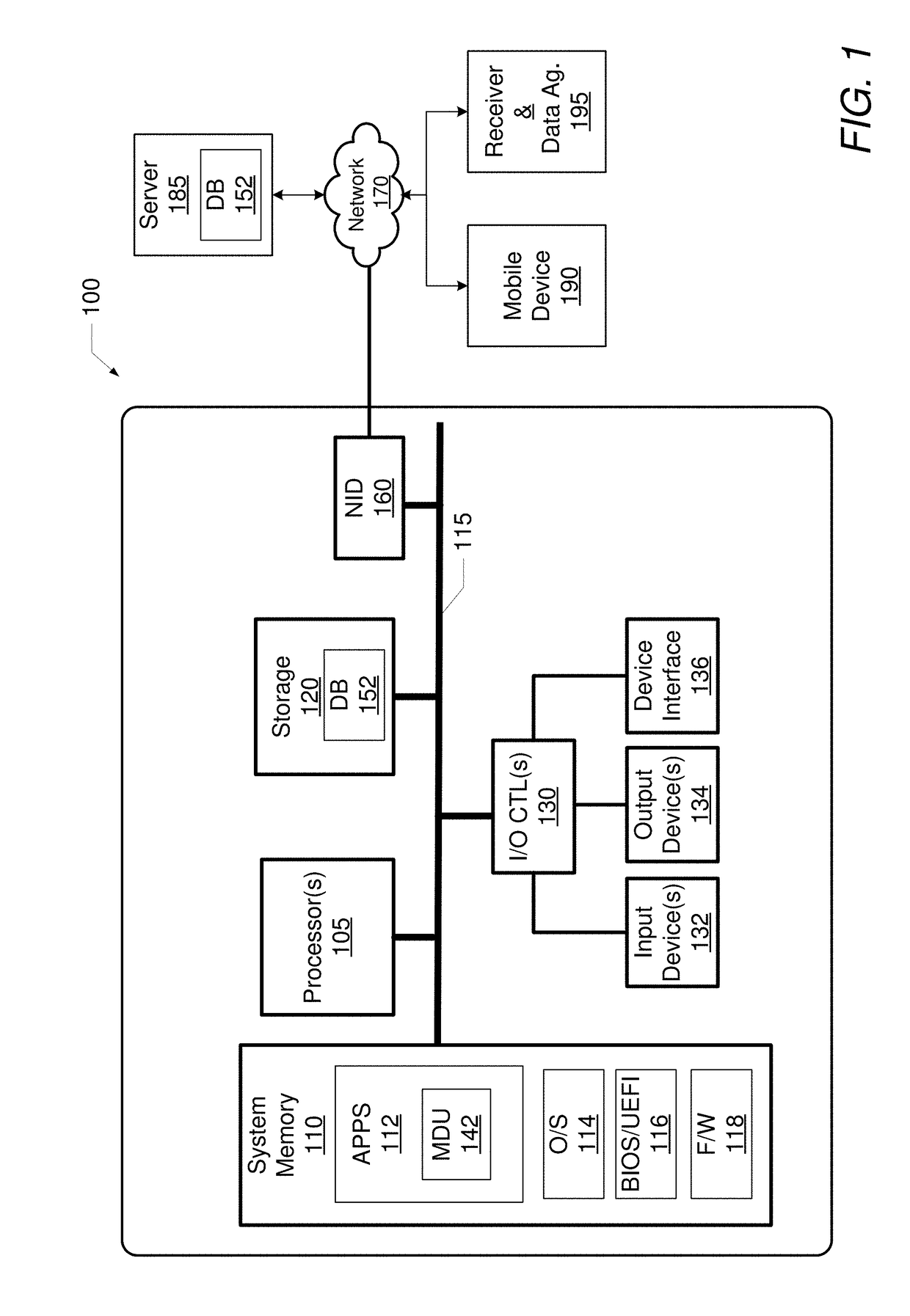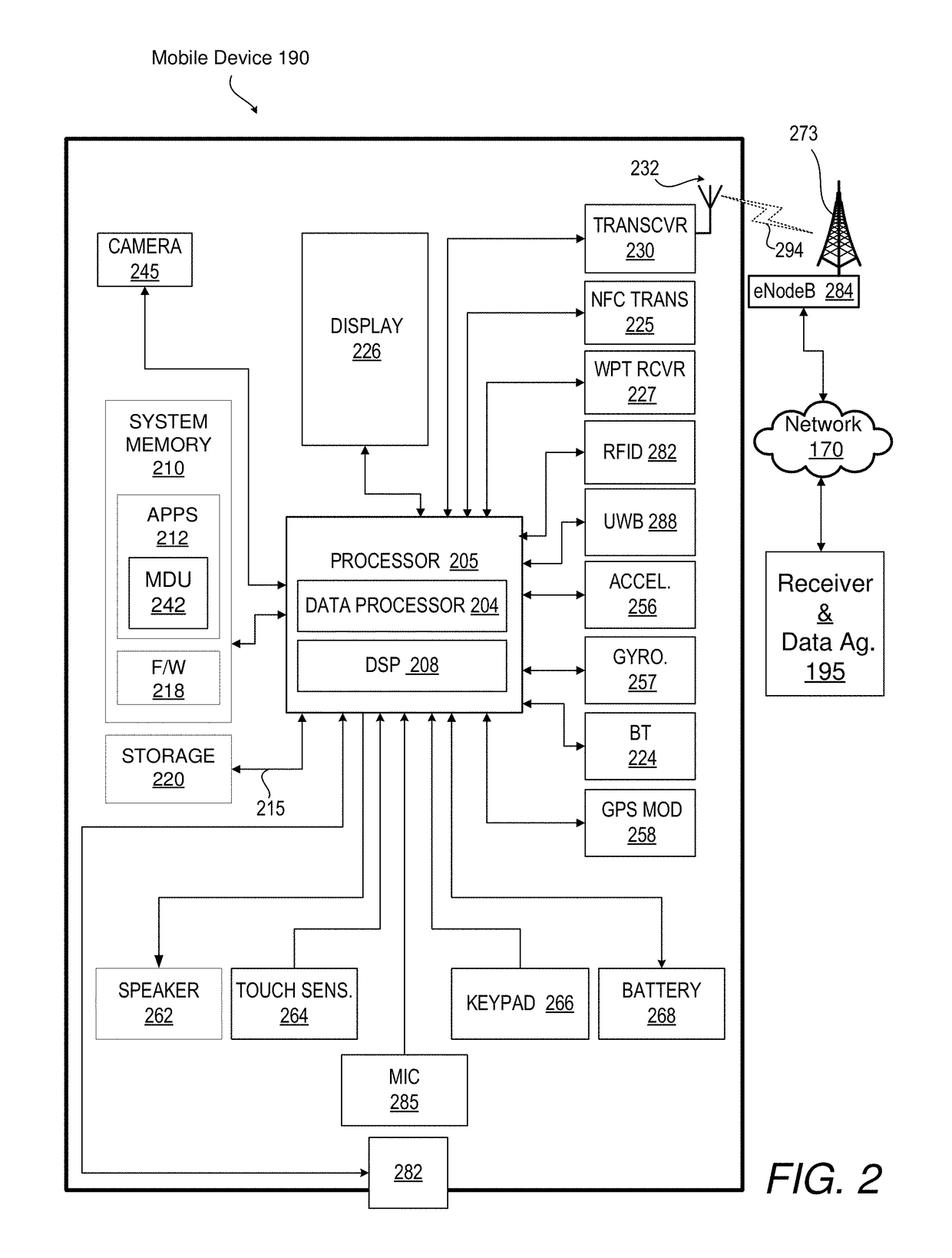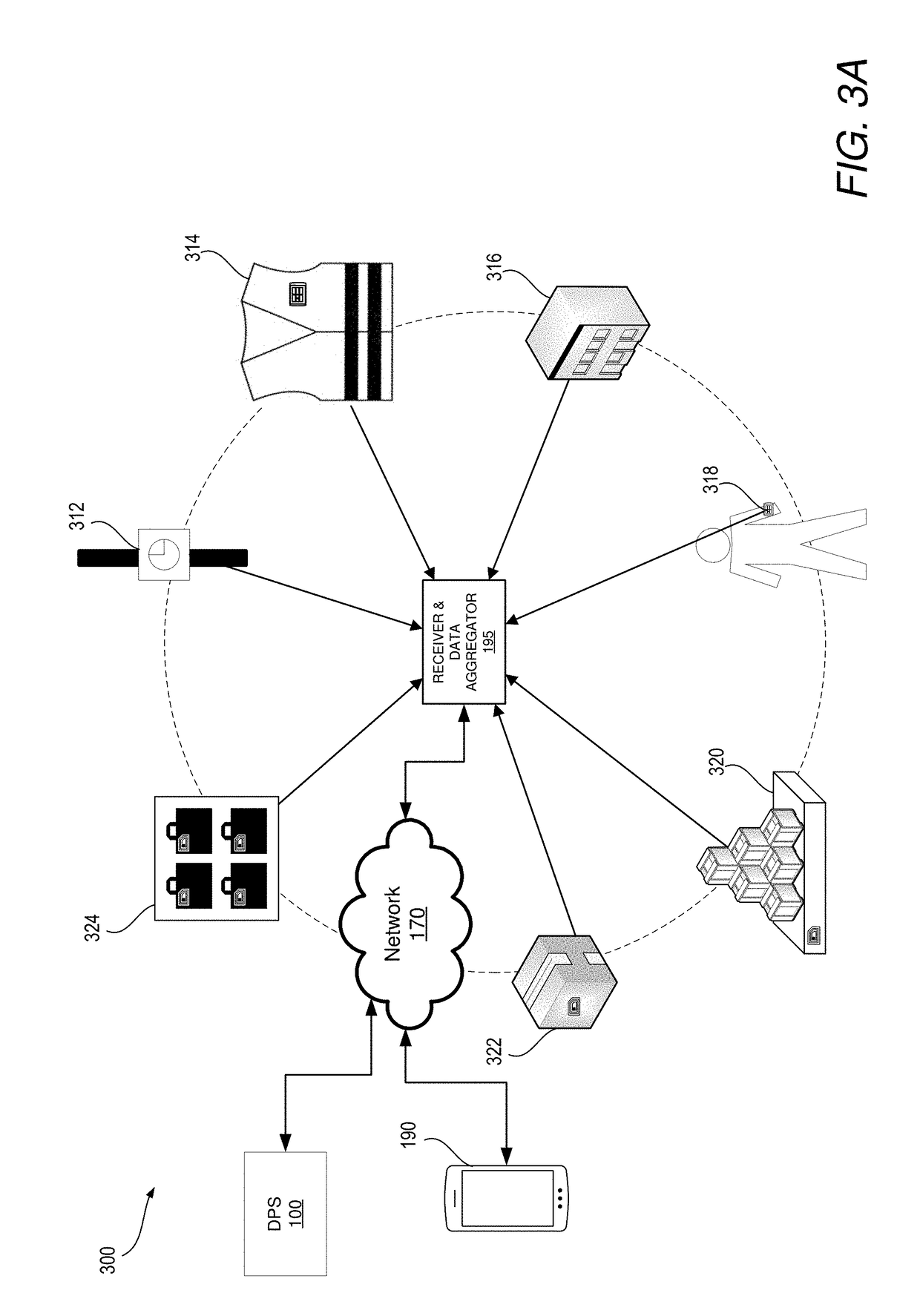Method and electronic device for detecting and recognizing autonomous gestures in a monitored location
- Summary
- Abstract
- Description
- Claims
- Application Information
AI Technical Summary
Benefits of technology
Problems solved by technology
Method used
Image
Examples
Embodiment Construction
[0013]Disclosed are a method, an electronic device, and a computer program product for identifying activities and / or events occurring at a monitored geographic location based on a sequence of movements associated with a user device. According to one embodiment, a processor of a data processing system receives data collected by at least one user device. The data includes at least one coordinate that is, at least in part, indicative of a geographic location of the user device, and the data presents information that corresponds to at least one specific movement of the user device within the geographic location. In response to receiving the data, a processor determines whether the geographic location of the user device is a monitored location in which activities are monitored. In response to the geographic location being a monitored location, the processor determines which specific movements are presented by the at least one coordinate. The processor identifies, from a database, a perfo...
PUM
 Login to view more
Login to view more Abstract
Description
Claims
Application Information
 Login to view more
Login to view more - R&D Engineer
- R&D Manager
- IP Professional
- Industry Leading Data Capabilities
- Powerful AI technology
- Patent DNA Extraction
Browse by: Latest US Patents, China's latest patents, Technical Efficacy Thesaurus, Application Domain, Technology Topic.
© 2024 PatSnap. All rights reserved.Legal|Privacy policy|Modern Slavery Act Transparency Statement|Sitemap



